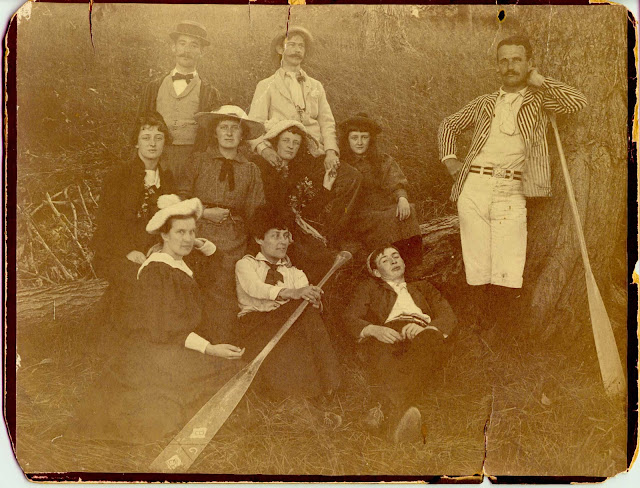Continuing on from
Part 1, work on the hard maple replica of the c1770 Cree paddle in the Private Nagy collection proceeded well but slowly.
Hudson Bay Cree Paddle
68 Inch long
circa. 1770
Photo Credit: Clinton Nagy - SplendidHeritage.com
Blank being shaped
Hard maple is exceedingly heavy so the blade was thinned considerably from the normal 3/8 inch thickness used by many paddle makers. Once the blade portion was done, I thought of staining to match the tones of the original paddle. But a decision was made to use a propane torch and do an extensive charring on the shaft and grip to mimic the aged patina and a lighter burn to replicate the uneven colouring on the blade.
After the brief torching process, I wanted to take some photos. Being distracted by getting the camera, I neglected to realize that some of the thinned maple edge were left smoldering and eventually revealed some splits. In the end, I salvaged the paddle by having to reshape the blade tip a bit from the original shape. Lesson learned when exposing thinned maple to a propane blow-torch!
The original notes provided on the webpage listing mentioned that the zigzag decoration was made by etching the surface when the varnish applied was still wet. I wasn't aware of native use of varnish sealants but after doing some additional research have learned that a rudimentary varnish made by clarified pine resin and turpentine has been documented.
In order to complete this paddle in the spirit of the original, I decided to try and make a similar varnish formula using harvested pine resin in my local area. Large globs of resin were collected from a neighbourhood park where some mature pines had been pruned. On my backyard work bench, the harvested resins were heated in the same old pot ($1.99 thrift store purchase) used for making pitch for the birchbark canoe years ago. The modest flame of an alcohol camping stove provided the heat.
The melted resin smells wonderful but can spontaneously ignite so precautions must be taken, including having a tight lid for the pot to snuff out any flames.
Once filtered through some cheesecloth, the resin was cooled to solidify into a block.
In a separate setup, a small shallow can was filled with some non-refined turpentine obtained at an art supply store. Using a double boiler method, the can was placed into another pot with heated water serving to warm the turpentine while small chunks of clarified resin were added in approximate ratio of 1:2 resin to solvent.
I eyeballed it to make enough for a single coat on both sides of the blade. Once thoroughly melted and slightly bubbling, the mixture was removed the heat an allowed to cool to room temperature. The resulting liquid had the expected golden colour with the flow consistency of watery honey. First tested on some scrap, the thin homemade varnish went on well. Waiting roughly 24 hours between coats, the process was repeated 2 more times.
To mimic the zigzag etchings, a final coat of 2:1 resin to solvent was put on. The pattern was mimicked as best I could given the time restraints of the drying mixture and the difficulty of working with a sticky, resinous surface. Etching just the pattern worked, but given the charred surface of the wood, there was very little contrast to make them visible, so in the end, I let the homemade varnish cure for a few days and then scraped out the pattern to reveal the blonde maple wood below.
Afterwords I realized that my zigzags were not as steep or spaced as close together as the original, but I'm still happy with the results. The shaft and grip been oiled but the glossy sheen didn't come out in the photo I took. Here is my reproduction
Reproduction of the Hudson Bay Cree Paddle
Collected by George Holt
1768 - 1771
I've written an article for
Wooden Canoe with more historical details and images. It has been printed in the December 2018 issue - Voume 41 No.6). A downloadable version in *.pdf format is available
HERE.





















